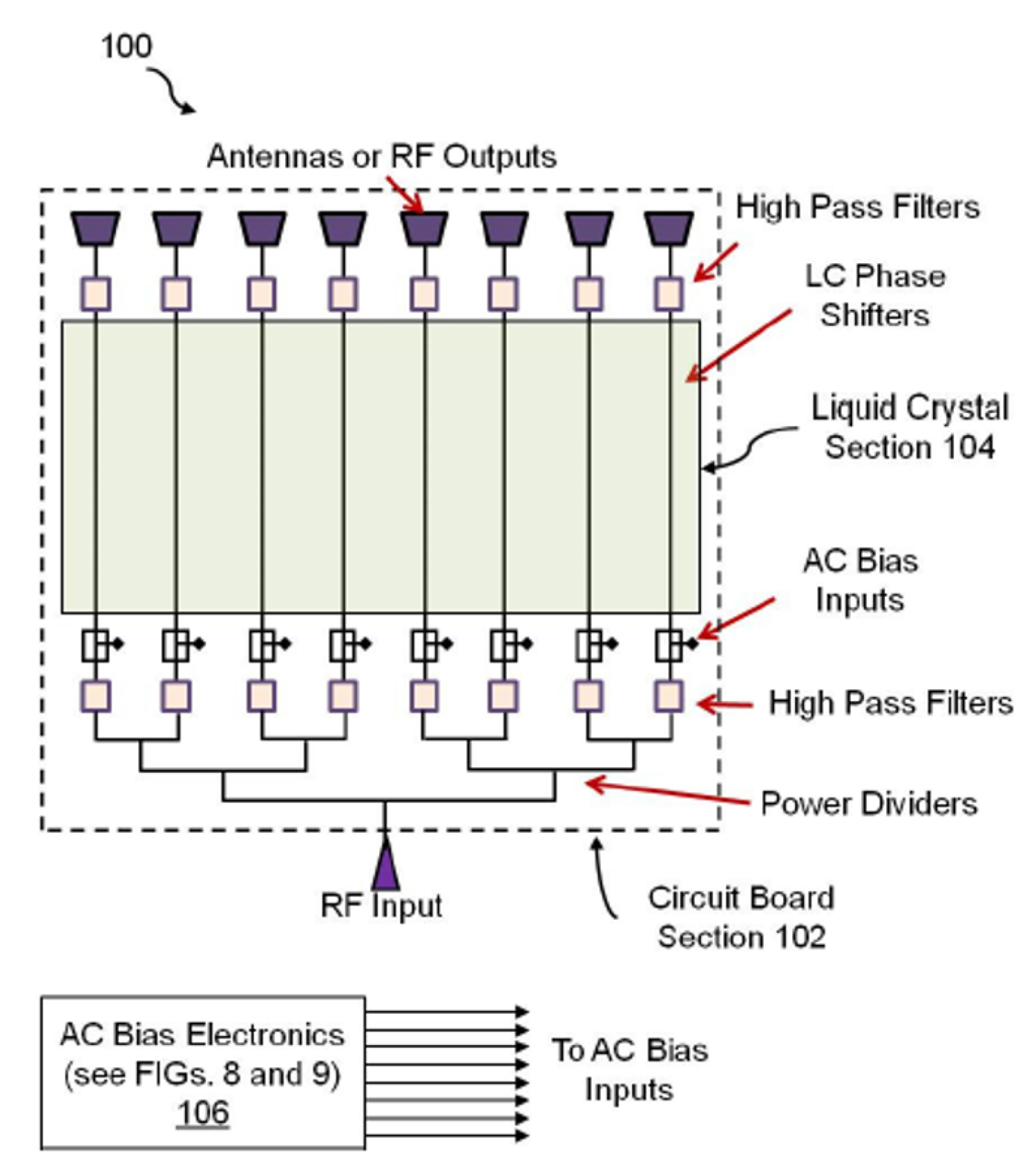A portable phased array radar device based on dual-frequency liquid crystal technology

Background
One limit to the use of phased array radars is the physical size of the arrays. Their large size prevents their use in collision avoidance systems in automobiles and other platforms that could benefit from such a system. The size and spacing of the antenna elements are dictated by the frequency of the radiated energy. Thus, one method to reduce the size of the devices is to increase the operational frequency. As the frequency used in the systems has increased, the components used to control the individual element phase have reached physical limits. MEMs devices become size limited and experience sticking and other failures at microwave frequencies. Magnetic phase control components become larger and heavier as frequency increases. Ferroelectric based phase shifters exhibit high losses above 40 GHz. These physical shortcomings limit the useable frequencies, creating a barrier to how small the antenna elements can be.
Technology
One solution is the use of liquid crystal (LC) media to control phase in the individual elements. LC is considered transparent to the signal in frequencies ranging from MHz to THz. Researchers at the university of Colorado have developed a phased array system that uses LC as a phase shift medium. This technology allows for antenna design for higher frequencies over conventional phase shift technology. This opens the way to create small, compact systems that can be utilized in new areas including self-driving vehicles, hand-held secure communication devices, and robot guidance systems. They also developed a new “flip-chip” method for assembling the antenna. This allows for the separation of glass liquid crystal cells from the printed circuit board used for the associated antenna electronics. This gives the entire assembly a modular nature making it easy to swap liquid crystal cells and / or the PCB boards.
Advantages
- Cheap
- Easy to produce
- Modular
- Increase efficiency
Applications
- Self driving cars
- Robot guidance systems
- Handheld secure communication devices
What's Next?
This technology is ready for exclusive licensing.
Nicole Forsberg: nicole.forsberg@colorado.edu
The Newsroom
For marketing and communication inquiries or news tips, contact Daniel Leonard, senior marketing and communications specialist for Venture Partners at CU Boulder.
For media inquiries, please visit colorado.edu/news/formedia.


